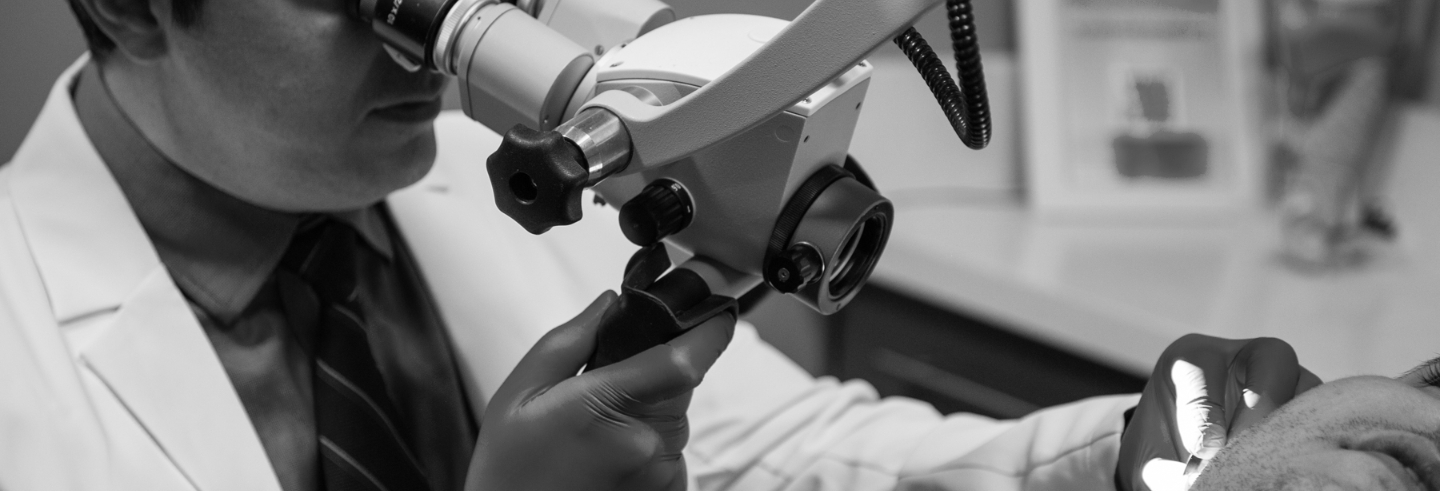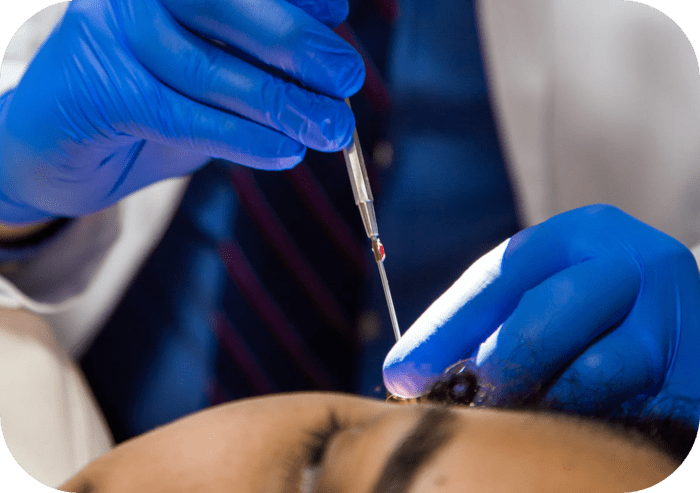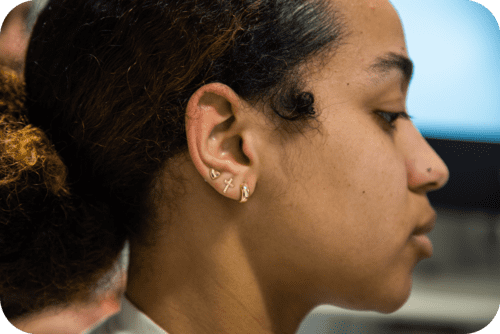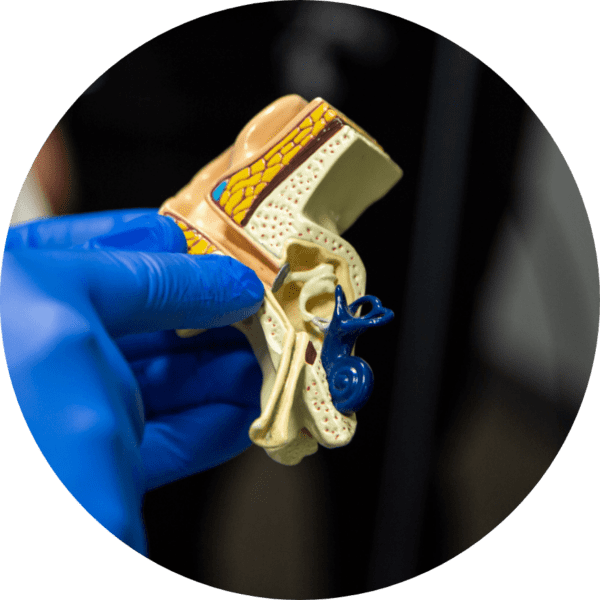Otosclerosis
What is
Otosclerosis?
Otosclerosis is a unique condition where normal bone begins to overgrow in the middle ear. This growth causes fixation of the stapes bone, which functions as the main piston for transmitting sound energy from the outside world into the inner ear. If left untreated, the stapes can become completely immobile, leading to significant conductive hearing loss. Fortunately, the stapedectomy procedure has been developed and perfected over several decades to help restore this hearing loss for thousands of patients without the need for hearing aids.
What are the symptoms of otosclerosis?
The most common symptom of otosclerosis is hearing loss. Patients typically notice a gradual decrease in hearing over several years. Those with early otosclerosis first experience difficulty hearing low-pitched sounds, such as whispering or engine noises. They often complain that they can understand speech but find the volume too low. Other symptoms may include dizziness and tinnitus (ringing or buzzing in the ear).
How is otosclerosis diagnosed?
An otologist (ear specialist) can easily detect evidence of otosclerosis during your initial visit. Using an otoscope, the otologist will examine the eardrum and parts of the middle ear. They will also perform a hearing test and tuning fork testing to confirm conductive hearing loss. Additionally, a test called the “acoustic reflex” can provide clues about the fixation of the stapes bone. In some cases, a CT scan of the ear may be necessary to rule out other possible causes of hearing loss.


Are there medical treatments for otosclerosis?
Similar to other forms of hearing loss, a hearing aid can be beneficial for patients with otosclerosis. Studies indicate that fluoride supplementation may help slow the progression of otosclerosis. Additionally, most patients with otosclerosis are candidates for a stapedotomy procedure, which can restore hearing without the need for a hearing aid.
What are the surgical options for otosclerosis?
The stapedectomy procedure is a minimally invasive surgery that removes the fused bone in the middle ear and replaces it with a small titanium prosthesis. In most cases, it helps restore the patient’s hearing without the need for a hearing aid. The procedure, which takes about an hour, is performed in an outpatient surgery center, allowing patients to go home the same day. The recovery period is short, and patients usually notice an improvement in hearing within a week after surgery.
Access to eardrum

Stapedectomy can be done with local or general anesthesia. The surgeon uses a laser or micro-instruments to access your eardrum. Sometimes, the doctor opts to make a small incision behind or in front of your ear to access your eardrum.
The eardrum is lifted

The eardrum is lifted to reach the middle ear bones.
Stape is replaced with a device

Stape is removed and replaced with an artificial device.
Putting the eardrum back in place

The surgery is finished by putting the eardrum back in place.
The surgeon places bandages or other material on your eardrum to hold it in place while your ear heals.
What is the recovery after the surgery?
You’ll be able to go home once you’ve recovered from anesthesia. It’s important to rest for the first few days after your surgery. Most people’s ears heal within about six weeks. Here are some other things to expect after your stapedectomy:
– You may have some bloody discharge from your ear. If this occurs, gently place cotton balls in your ear to absorb the discharge.
– Your doctor may prescribe antibiotic drops for your ear.
– You’ll need to keep your ear dry. When you shower, put some Vaseline on a cotton ball and place it in your ear. Gently pat the outside of your ear dry after your shower.
– Avoid flying in airplanes until your ear heals, which may take four to six weeks. The pressure changes during flights can dislodge your device.
– Do not use earbuds until your ear heals.

You may not realize you have otosclerosis until you notice difficulty hearing whispers or soft speech. Stapedectomies are an effective treatment for otosclerosis and can restore your hearing. If you’ve been diagnosed with otosclerosis, a stapedectomy may be the solution to your hearing problem.
Still have questions regarding the condition?
While the information in this website may be helpful, it will never fully relate ear treatment to you. If you are facing any ear problem, please call our office and one of our representatives will talk to you.
CONTACT USTESTIMONIALS
What are patient say about us
Thanks to the expert care and skillful ear surgery I received, my life has been transformed. I can hear clearly again, and I’m forever grateful for the life-changing experience provided by the talented team
“Dr. Nazarian, who gave me back the wonderful gift of hearing!”
“Since the very first time of seeing Dr. Nazarian, I feel that I have been in the best of care- and from the first day and through the my surgery, I have felt that Dr. Nazarian is a very compassionate and caring doctor- more than I have ever seen. I feel very fortunate to have been referred to Dr. Nazarian. He is the best!”